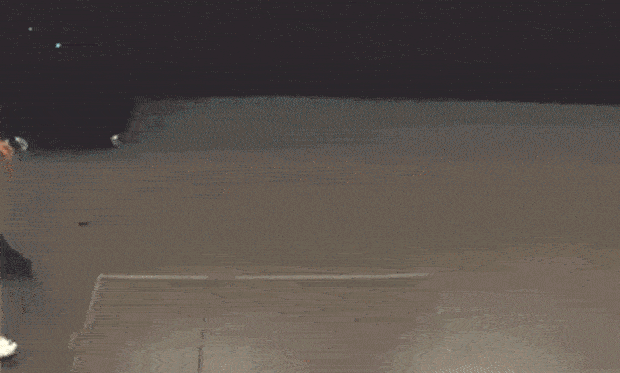Artificial intelligence software combined with a robotic harness could help spinal injury and stroke patients walk again. Clinical trials are underway.
Rehabilitation programs for spinal cord injuries or strokes usually have patients walk on treadmills at a steady pace while harnesses support their weight to varying degrees. In the new study, researchers sought to develop a system that better mimicked the conditions that people might experience during everyday life, where they would have to move in more than one direction and vary their gaits.
“The idea is to provide the most appropriate environment for patients to be active during training,” says study co-author Grégoire Courtine, a neuroscientist at the Swiss Federal Institute of Technology Lausanne. “The goal of this rehabilitation is to have patients repeat natural activities for an extended amount of time.”
The scientists developed a robotic harness that uses cables to control the amount of upward and forward force that patients feel while also permitting them to walk forwards, backwards, and side to side. This robotic harness was controlled by software that personalized the multidirectional forces that each patient experienced depending on their specific problems.
In order to customize patient experiences, this system relied on an artificial neural network, where components known as artificial neurons are supplied data and work together to solve a problem. The neural net can then alter the pattern of links among those neurons to change the way they interact, and the network tries solving the problem again. Over time, the neural net learns which patterns are best at computing solutions, an AI strategy that imitates the human brain.
The neural net the researchers used analyzed roughly 120 different variables of patient movements, such as how fast they could walk, and then computed what kind of support they should need. “The amount of support that patients receive is calculated precisely for each patient,” Courtine says. “If patients need only as much gravity as they would experience walking on the moon, the harness creates a moon-like feeling of gravity, and if the patients are stronger, it creates, say, a Mars-like feeling of gravity.”
As part of a clinical trial of this “neurorobotic platform,” the researchers experimented with 26 volunteers recovering from spinal cord injuries or strokes, whose disability ranged from being able to walk without assistance to being able to neither stand nor walk independently.
The participants were tested on four tasks—standing on two separate plates, walking on a straight path, walking on a wavy path, or walking on a ladder with irregularly positioned rungs. They either had or did not have robotic assistance in such tasks.
After the volunteers walked roughly 20 meters using the neurorobotic platform to familiarize themselves with the apparatus, three patients with spinal cord injuries who previously could not stand independently could, immediately after such practice, walk with or without assistance. Four of 10 patients with spinal cord injuries who previously could only move with crutches or a walker could, immediately after such practice, do so without assistance. Similar or even superior findings were seen with stroke patients, the researchers say.
Furthermore, after a one-hour training session with the neurorobotic platform, four out of five patients with chronic spinal cord injuries who previously could only walk with the assistance of a device experienced significant improvements, such as increase in speed, the researchers say. In contrast, the same amount of time on just a treadmill actually impaired the ability to walk without robotic assistance in one patient.
“It’s striking how a system that applies force in directions other than just vertical can make a world of difference,” Courtine says.
The scientists are also exploring how spinal cord stimulation can improve patient mobility. They are combining that approach with their neurorobotic platform, Courtine says.
The neurorobotics platform will be commercialized under the name Rysen by Amsterdam-based Motekforce Link and by G-Therapeutics, which is headquartered in Eindhoven in the Netherlands as well as Lausanne, Switzerland. The researchers detailed their findings online July 19 in the journal Science Translational Medicine.
Charles Q. Choi is a science reporter who contributes regularly to IEEE Spectrum. He has written for Scientific American, The New York Times, Wired, and Science, among others.



